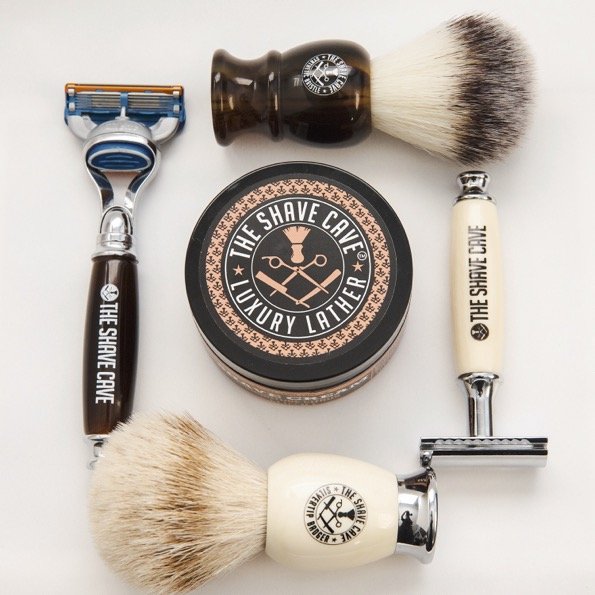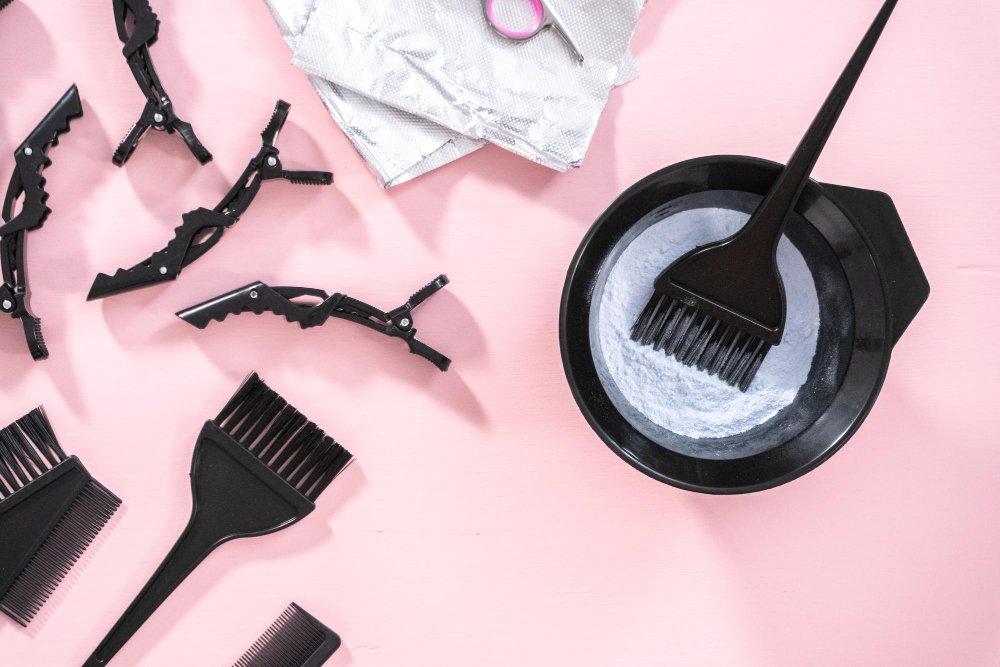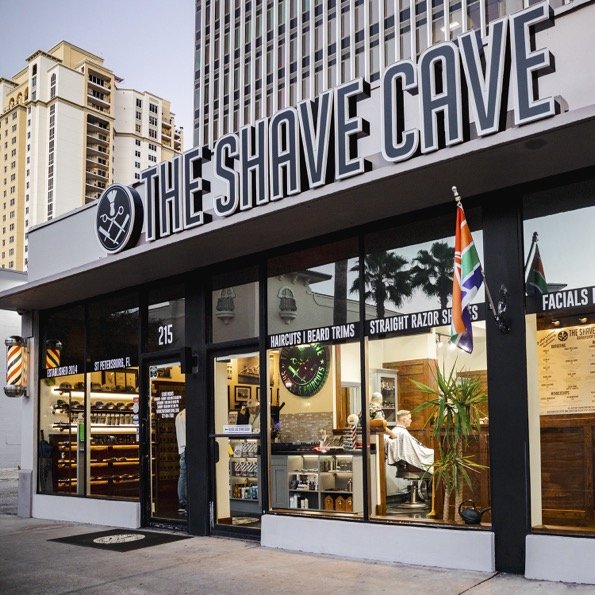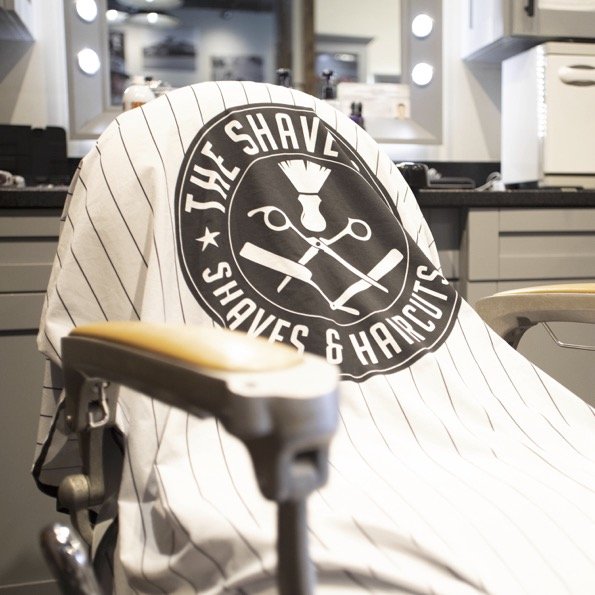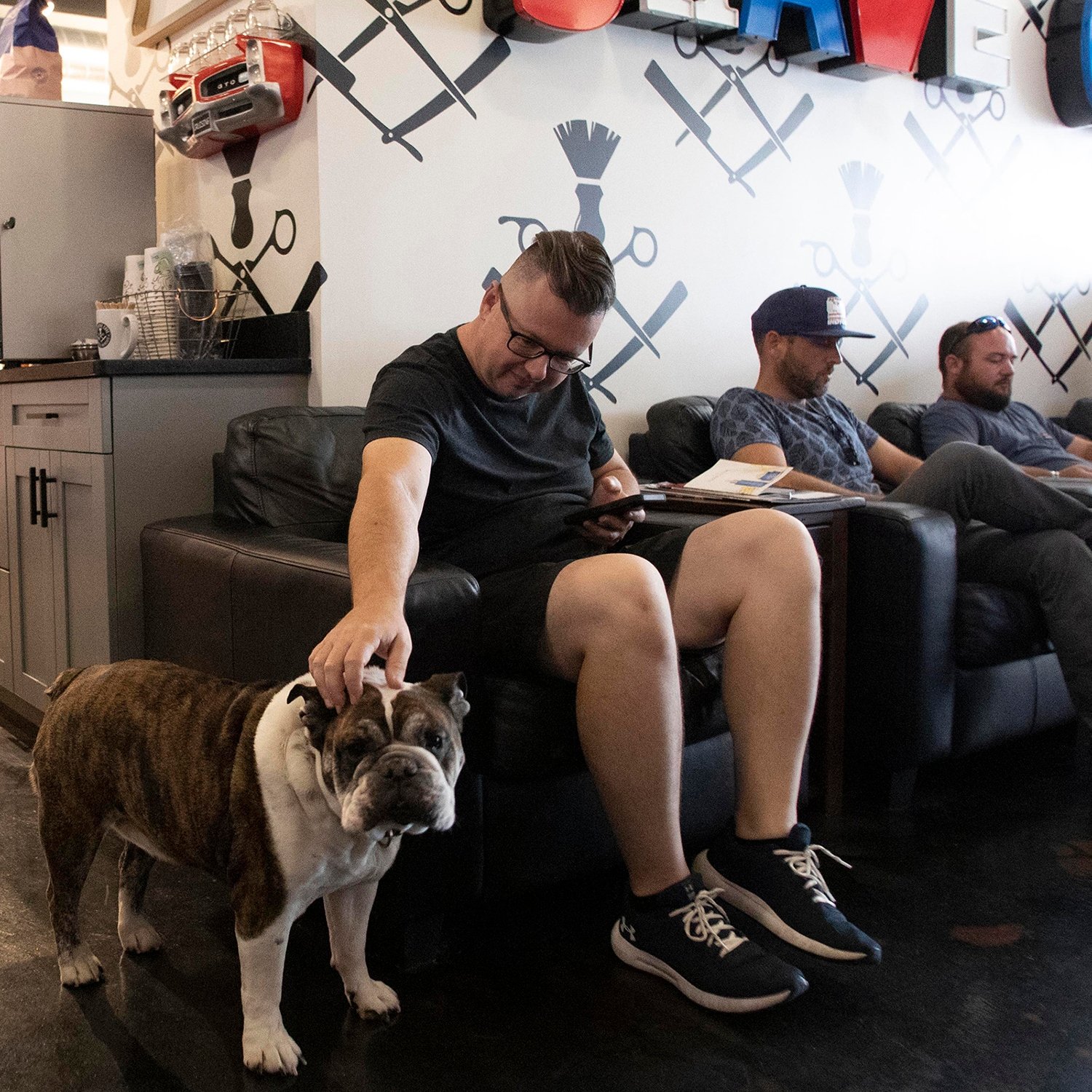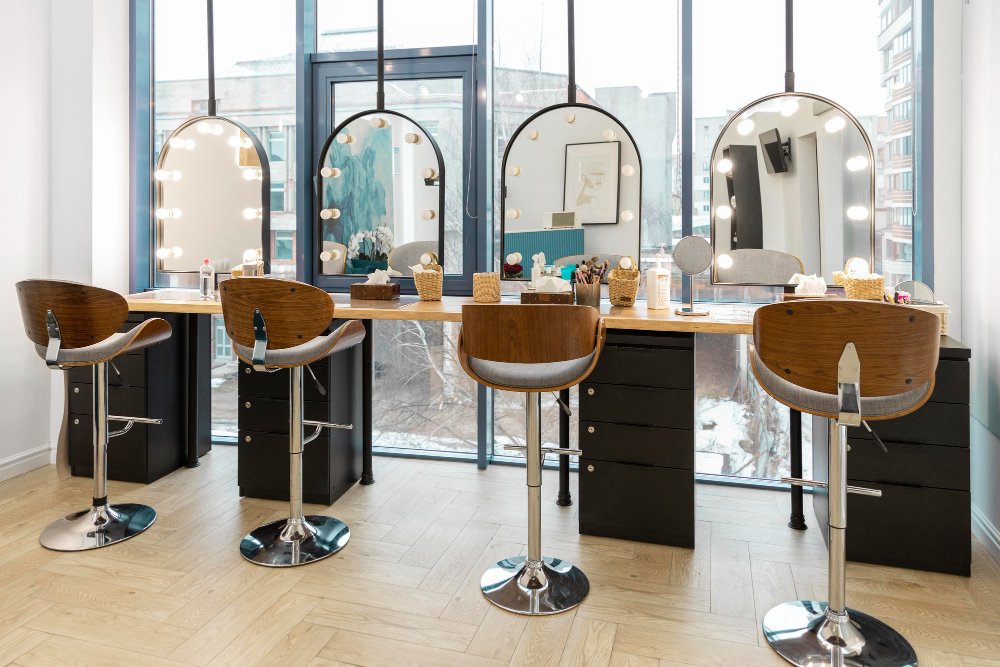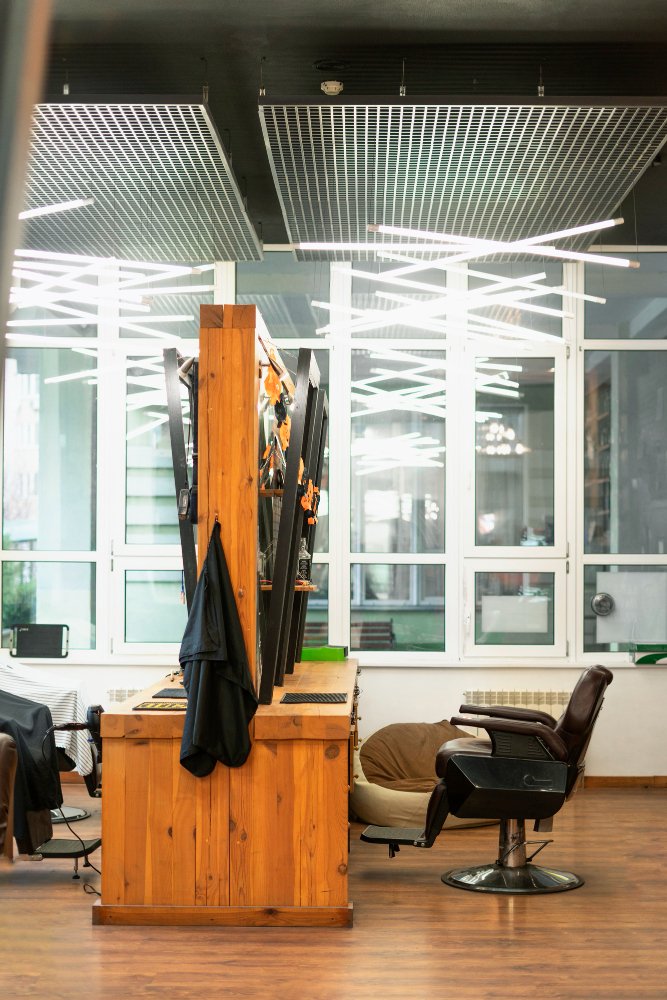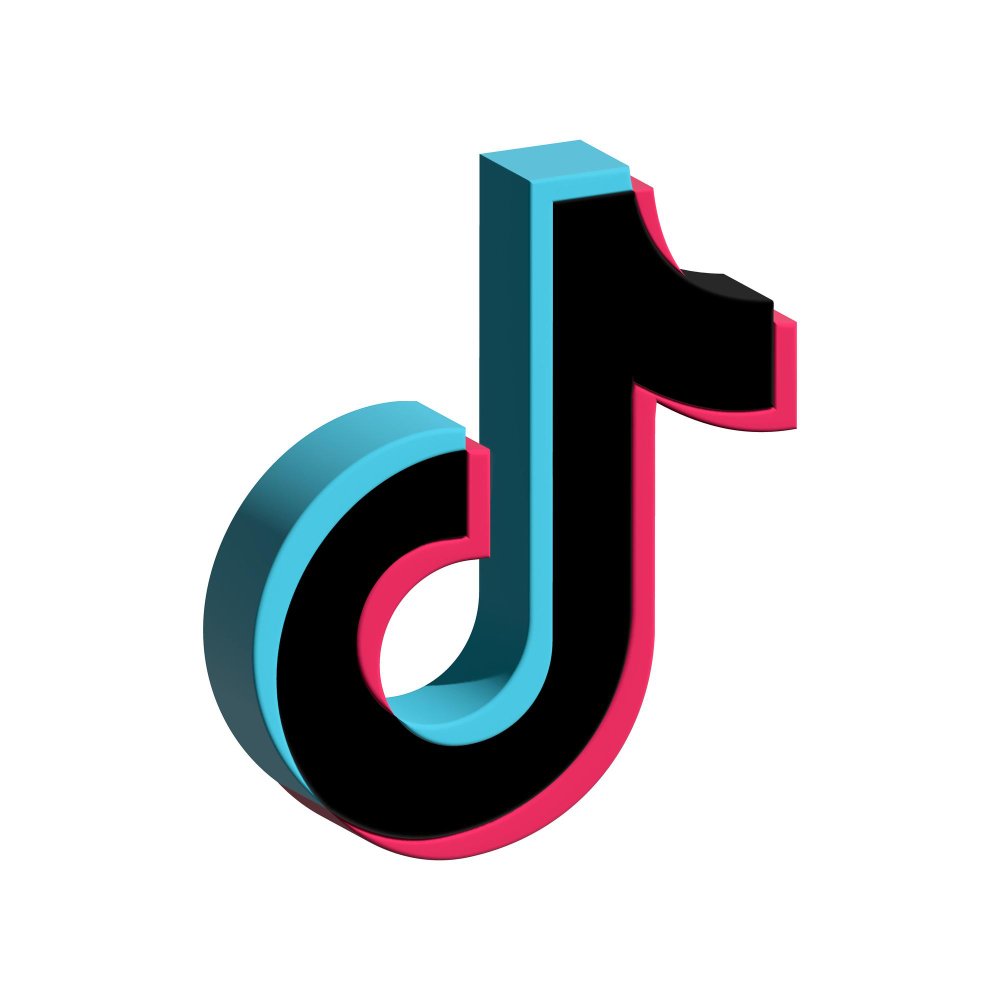Do barbers and hairstylists do the same thing?
The simple answer is no, however some service providers are both. Let me explain...
While barbers and hairstylists share some similarities in working with hair, the nuances of their training and expertise in hair care, their specialization, services offered, clientele, and working environments differ, catering to distinct preferences and grooming needs.
In this article, we will dive into the differences and similarities between barbers and hairstylists, shedding light on their respective expertise and contributions to the world of hair care. The profession of barbering has undergone significant historical evolution, shaping it into what it is today.
A Little Bit of History
Historical Evolution of Barbers and Hairstylists
The historical evolution of barbers and hairstylists is a fascinating journey that reflects the changing cultural, social, and economic landscapes throughout history as far back as ancient times for any grooming "ritual".
But did you know that Barbers were also surgeons?
It was quite Medieval
Medieval Times
The Rise of the Barber Guilds
During the Middle Ages, barbers, aka Barber Surgeons, did more that just perform grooming services. They were also tasked with performing minor surgeries, bloodletting, and tooth extractions. And with great power comes great responsibility, leading to the Rise of the Barber Guilds.
What that means is that during those times, these barber surgeons formed guilds to regulate their profession and ensure standards of practice, playing a crucial role in training apprentices, setting prices, and maintaining professional ethics all within the barbering community.
The Iconic Barber Pole
Red, White, and eventually Blue
The barber pole, with its red and white stripes, carries a lot of symbolism.
The red and white stripes on the pole represented the bloody and clean bandages, because you know... surgeries. Over time, the blue stripe was added to symbolize the vein being cut during bloodletting.
Today, the barber pole remains a symbol of the profession. Traditional barbering customs, such as hot towel shaves and straight razor techniques, have been passed down through generations, preserving the artistry and craftsmanship of classic barbering.
As Time Went On
During the Renaissance and Enlightenment periods, barbershops emerged as social hubs where men gathered for grooming, conversation, and camaraderie. Barbershops became synonymous with masculinity and served as centers of community life.
Then came The Industrial Revolution bringing significant changes to the barbering and hairstyling professions. Technological advancements in tools and equipment, such as mechanical clippers and hairdryers, revolutionized the way hair was cut and styled. With the rise of urbanization and the expansion of the middle class, hairstyling salons became increasingly popular, offering a wider range of services catering to both men and women.
It was in the 20th century where barbering and hairstyling became more specialized with distinct training programs and licensing requirements for each industry. Barbers primarily specialize in men's grooming, whereas hairstylists cater to both men and women, providing a wider array of services that may not include traditional straight razor shaving on the face or neck.
Training and Licensing
While barbers and hairstylists share similar foundational courses in hair cutting, shampooing, and chemical services, their specialty courses diverge. Hairstylists often focus on advanced techniques such as hair coloring and styling, with courses covering various coloring methods and hair arranging. In contrast, barbers receive specialized training tailored to men's grooming, encompassing traditional barbering skills like shaving, beard and mustache trimming, along with a comprehensive understanding of hair structure and chemistry. This distinction reflects the unique expertise each profession offers, catering to the specific needs and preferences of their clientele.
Although both licenses mandate extensive sanitation, disinfection, and HIV/AIDS certifications, the barbering requirements are more comprehensive due to the heightened risk of exposure to blood.
Barber Certification
Barbering Certification Program is typically Around 900 hours
Levels of barbering go all the way up to becoming a Master Barber
Here are some standard criteria that generally define a Master Barber:
Extensive hands-on experience with a diverse clientele and a wide range of hair types.
Rigorous training and education in traditional barbering techniques, including haircuts, shaves, and grooming services.
Mentoring and guiding junior barbers, contributing to the growth and development of the next generation in the industry.
Cosmetology Certification
Hairstylists, on the other hand, receive a Cosmetology license which is broader training in cutting, coloring, and styling hair for both men and women, as well as Theory in both Skin and Nails. A typical Cosmetology program is around 1200 hours.
.
There are also levels of expertise when achieving a Master Stylist title. While there is not any regulated curriculum to getting a diploma like certification, there are ways to earn the coveted title of a Master Stylist.
Some criteria that might define a Master Stylist:
Several years of hands-on experience working with diverse hair types, textures, and styles.
Extensive training and education in haircutting, coloring, and other hair-related services.
Mentoring or training junior stylists, contributing to the education and development of others in the industry.
Scope of Services
Today barbers primarily focus on haircuts and facial hair grooming services such as beard trims, mustache trims, and straight razor shaves. Barbershops may also offer additional services like hot towel treatments and facial massages. Barbers are more specialized amongst the male demographic niche.
Hairstylists on the other hand offer a wider range of services catering to both men and women, including haircuts, hair coloring, hair styling, hair treatments (such as deep conditioning or keratin treatments), and sometimes other services like chemical hair straightening, keratin treatments, perms and hair extensions. Hairstylists may specialize in innovative cutting and coloring techniques, such as balayage, ombre, and color melting, to create customized looks for their clients.
Clientele and Target Audience
Barbers often cater to a predominantly male clientele, although some barbershops, like The Shave Cave, may also serve women for certain services like short haircuts.
Hairstylists typically serve a more diverse clientele, including both men and women of all ages catering to various hair types, lengths, and styles.
Tools and Techniques
Barbers primarily employ clippers, trimmers, scissors, and straight razors for precise cutting and shaving, along with shaving brushes for men's grooming. They also integrate modern technology into their services, utilizing advanced clippers with adjustable blades, electric shavers, and beard trimmers equipped with precision settings. Barbershops may also have vintage barbering tools and equipment for a traditional barbering experience. Additionally, barbers are highly skilled in techniques like fading, tapering, and beard shaping.
Hairstylists receive training in cutting, coloring, styling, and chemical treatments for both men's and women's hair. They can work in salons or obtain additional certifications in specialized techniques. In addition to using tools like scissors and razors, they utilize instruments like curling irons or straightening irons for advanced styling. Hairstylists also incorporate technological advancements in hair tools and equipment, including ceramic flat irons, infrared hair dryers, and digital color-matching systems for precise hair coloring.
Shop Environment and Atmosphere
Barbershops traditionally have a more traditional and masculine ambiance, focusing on providing personalized grooming experiences for male clients. Also many barbershops may have vintage decor and offer amenities like complimentary drinks and grooming products. For example, The Shave Cave sports a traditional vibe, but with modern amenities such as a bar and big screen tv.
Hair salons where hairstylists work often have a more gender-neutral or feminine atmosphere. Salons can range in decor from relaxed to ultra modern depending on their brand or demographic.
Specialized Skills and Expertise
Men's Grooming Techniques:
Barbers are highly skilled in traditional men's grooming techniques, including precise scissor cuts, clipper cuts, and straight razor shaves. They have expertise in creating classic men's hairstyles and executing intricate detailing on facial hair like beards and mustaches. Barbers are also specialized in Fades and Tapering.
Hairstylists, while they may also be proficient in men's haircuts, often focus more on contemporary styling techniques for both men and women. They might specialize in trendy cuts, modern coloring techniques, and creative styling for diverse hair textures.
Shaving, Beard and Mustache Trimming:
Barbers are trained in the art of traditional wet shaving, which involves using a straight razor to achieve a close and smooth shave. They have expertise in preparing the skin, lathering shaving cream, and executing shaving techniques that minimize irritation and provide a luxurious grooming experience. Barbers possess specialized knowledge and techniques for grooming and shaping facial hair. They can sculpt beards and mustaches to enhance facial features and achieve specific styles.
Hairstylists may offer beard trims as part of their services, but barbers typically have more expertise in this area, particularly when it comes to using tools like straight razors for precise outlining and detailing. Straight shaving falls within the domain of the barber, however some hairstylists may offer facial treatments or grooming services that complement their hair services.
Modern Trends and Innovations
In recent decades, barbershops and hair salons have experienced a resurgence in popularity, fueled by trends in men's grooming and self-care. Modern barbershops often blend traditional techniques with contemporary aesthetics, offering a unique and personalized experience for clients.
Hairstyling salons continue to evolve with changing fashion trends and technological innovations, where barbershops may stay on a more traditional line. From cutting-edge haircuts to innovative coloring techniques, hairstylists embrace diversity and creativity in their craft, catering to a diverse clientele.
Men's Grooming Trends:
Barbers often stay updated on the latest trends in men's grooming, including popular hairstyles, beard styles, and grooming products tailored specifically for men. Barbers may offer specialized services that cater to modern trends in men's grooming, such as facial hair sculpting, skin fades, and textured crop hairstyles.
Hairstylists keep abreast of trends in both men's and women's hair, including cutting-edge techniques in hair coloring, styling, and hair treatments. They may specialize in avant-garde or fashion-forward looks like that appeal to a diverse clientele.
Product Knowledge and Recommendations:
Barbers are knowledgeable about men's grooming products such as pomades, clays, and beard oils. They can recommend products that suit their clients' hair types and desired styles. Barbers are also experts in knowing what products are best for facial hair, like beard oils, after shaves, or shave creams.
Hairstylists have a broad understanding of hair care products, including shampoos, conditioners, styling products, and hair treatments as opposed to facial hair products. They can advise clients on maintaining healthy hair and achieving their desired looks using professional-grade products.
Social Media Presence and Influences:
Both Barbers and Hairstylists often showcase their work and connect with clients through social media platforms like Instagram, where they share photos and videos of trendy haircuts, classic looks, beard designs, and grooming tutorials, etc. Stay up to date with what we have going by following The Shave Cave .
Conclusion
In conclusion, while barbers and hairstylists may share some similarities in their craft, the nuanced differences in their training, expertise, and services offered highlight the unique roles each profession plays in the world of hair care. From the rich historical evolution of barbers as both groomers and surgeons to the diverse array of services provided by modern hairstylists, these professions continue to shape and innovate the landscape of personal grooming.
Whether you prefer the classic charm of a barbershop or the contemporary flair of a hair salon, remember that your choice reflects more than just a hairstyle—it's a statement of personal style and identity. So, the next time you sit in that chair, take a moment to appreciate the skill and passion behind the scissors or clippers, knowing that you're in the hands of professionals committed to helping you look and feel your best.
Max






